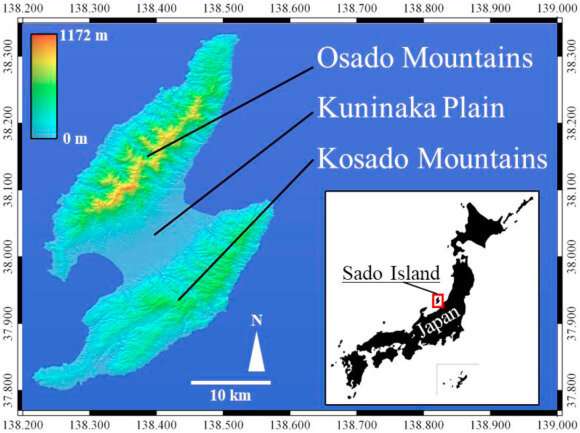Surveying an island invaded by toads and frogs

A study of invasive toads and bullfrogs on Sado Island in the Sea of Japan offers insights into the threat of invasive species worldwide. Kiyoto Sawada and colleagues at the University of Tsukuba in Japan discuss their findings and recommendations for protecting Sado's native habitat and its biodiversity in the open access Journal of Asia-Pacific Biodiversity.
Ever-increasing globalized trade has greatly increased the spread of a wide range of animal and plant species into non-native habitats. These alien species can affect native ecosystems and threaten their biodiversity by competition, predation, hybridization, transmission of pathogens and poisoning. Loss of biodiversity is one of the most serious problems affecting agriculture and ecosystems worldwide.
The invasive toads (Anura: Bufonidae) and bullfrogs (Anura: Ranidae) were introduced to Sado Island in 1964 and 1926 respectively. Until now, nobody has rigorously studied how these animals have spread across the island.
"They have a particularly negative impact due to predation, while the toads also have a negative impact as they are poisonous to native predator species," says Kiyoto Sawada. The toad and frog invaders threaten several endangered and endemic species including the Sado wrinkle frog Glandirana susurra and the Japanese crested ibis Nipponia nippon. The researchers are also concerned about the mass predation of insects by the invasive species, which could potentially upset the role these insects play in the unique island ecosystem.
Numerous studies from throughout the world show that the negative impacts of invasive species are particularly pronounced in island ecosystems. One of the most important issues to understand in order to tackle their threat is the distribution status of the species: "Without distributional information, there is no way to implement effective countermeasures," Sawada explains.
To address the current lack of data, the researchers conducted the first survey of the distribution of alien toads and frogs across all of Sado. They worked throughout the island's 856 square kilometers from February to August 2020. Their results reveal that the toad species Bufo japonicus inhabits only the south-western part of the island, near to where it was introduced, but is currently expanding its range. The American Bullfrog species Lithobates catesbeianus has a wider distribution range and is close to occupying most of its potential suitable habitat.
Analyzing the current situation allowed the team to predict that, in the near future, the B. japonicus populations will expand into the south-eastern part of Sado. They conclude that measures are urgently needed to prevent this expansion and to reduce the population of L. catesbeianus.
The authors discuss a variety of countermeasures that might be used to at first contain the spread of the toads and frogs, and then begin to roll back their distribution towards less threatening levels.
"Our work provides important information for biodiversity conservation, not only on Sado Island but also as a valuable example of how two globally invasive alien species are invading different landscapes," Sawada concludes.
More information: Kiyoto Sawada et al, Current and future predicted distributions of invasive toads (Anura: Bufonidae) and bullfrogs (Anura: Ranidae) on Sado Island, Journal of Asia-Pacific Biodiversity (2022). DOI: 10.1016/j.japb.2022.03.007
Provided by Springer

















